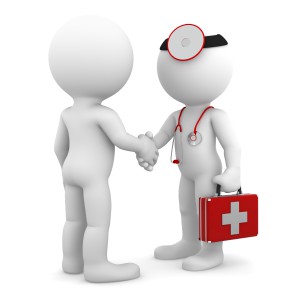In honor of Leukemia and Lymphoma Awareness Month we are focusing this week’s blog post on resources for these two conditions. Leukemia is a type of blood cancer that is fairly common, with an estimated 48,610 new cases each year. From the Leukemia and Lymphoma Society website, “Leukemia is a type of cancer that affects the blood and bone marrow, the spongy center of bones where our blood cells are formed. The disease develops when blood cells produced in the bone marrow grow out of control.” There are multiple types of Leukemia, some more common than others. The four most common types are named according to the type of cell that is affected, they are Acute Myeloid Leukemia (AML), Acute Lymphoblastic Leukemia (ALL), Chronic Myeloid Leukemia (CML) and Chronic Lymphocytic Leukemia (CLL). Lymphoma is similar to Leukemia in that it is a common type of blood cancer. From the Leukemia and Lymphoma Society, “Lymphoma is the name for a group of blood cancers that develop in the lymphatic system. The two main types are Hodgkin lymphoma and non-Hodgkin lymphoma (NHL).
In 2013, about 731,277 people are living with lymphoma or are in remission (no sign of the disease). This number includes about 172,937 people with Hodgkin lymphoma and 558,340 people with NHL.” Hodgkin lymphoma is defined by the presence of Reed-Sternberg cells, named after the scientists who discovered them; these are larger cancerous cells. Non-Hodgkin lymphoma, on the other hand, “represents a diverse group of diseases distinguished by the characteristics of the cancer cells associated with each disease type.”
What Help is Available for Leukemia?
 The first place to check for assistance is the NeedyMeds Leukemia Information Page. On this page we list what patient assistance programs are available for common Leukemia medications. These programs offer the medication at little-to-no cost to qualifying patients. Simply click the name of the medication to get information on the program – you will have to contact the program directly to apply. On this page we also link to four helpful and informative organizations – the Leukemia & Lymphoma Society, DKMS Americas, the Leukemia Research Foundation, and Treatment Diaries. These resources provide a wealth of information on the disease, current treatments, and research. Additionally we recommend checking the Diagnosis-Based Assistance listings for Leukemia. Which has twelve national and state-specific programs that offer a variety of services to patients in need.
The first place to check for assistance is the NeedyMeds Leukemia Information Page. On this page we list what patient assistance programs are available for common Leukemia medications. These programs offer the medication at little-to-no cost to qualifying patients. Simply click the name of the medication to get information on the program – you will have to contact the program directly to apply. On this page we also link to four helpful and informative organizations – the Leukemia & Lymphoma Society, DKMS Americas, the Leukemia Research Foundation, and Treatment Diaries. These resources provide a wealth of information on the disease, current treatments, and research. Additionally we recommend checking the Diagnosis-Based Assistance listings for Leukemia. Which has twelve national and state-specific programs that offer a variety of services to patients in need.
What Help is available for Lymphoma?
Again the best place to start would be the Lymphoma Resource page on the NeedyMeds site. This page is a collaborative effort with the Lymphoma Research Foundation, and like the Leukemia resource page it contains information on all available programs for Lymphoma drugs. On the right side of the page are a variety of links with information provided by the Lymphoma Research Foundation. In addition to the resource page we also have two national programs for Lymphoma on our Lymphoma Diagnosis-Based Assistance listings. These two programs offer financial assistance with child care, living expenses, co-pays, testing, and more.
For both Lymphoma and Leukemia we also recommend checking the Diagnosis-Based Assistance listings for Blood Disorders, Chronic, Serious or Life Threatening Illnesses, and Cancer. Between these three pages are over 150 national and state-specific programs offering a wide variety of assistance and services ranging from transportation and lodging to wigs, medical supplies, food, equipment, and more. We also have a listing for one camp for children with Leukemia and two scholarships for students who have Leukemia or Lymphoma.
Know of a program we missed? Let us know in the comments or send us an e-mail at info@needymeds.org!






2 Comments
Informative! Thanks.